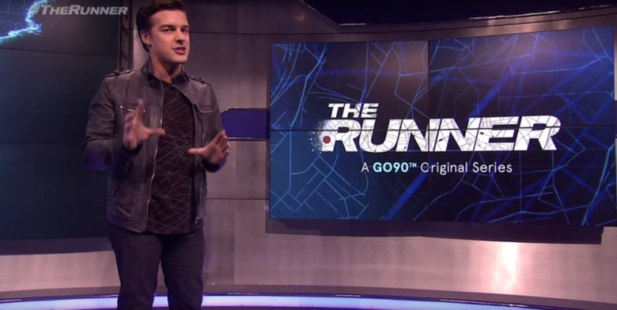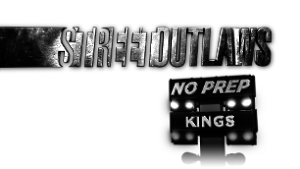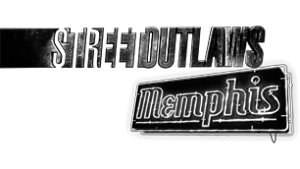Read the original article from IndieWire here.
“The Runner,” the online competition reality show chronicling a month-long cross-country game of tag, has yet to make history the way “Survivor” did. But executive producer Craig Piligian isn’t deterred.
“When I finished ‘Survivor’ [Season 1], I kind of knew I had made history, but I wasn’t arrogant enough to say it,” Piligian told IndieWire by phone. “This time, I’ll say it. I think we made history.”
Granted, it’s a smaller slice of history than “Survivor” claimed, as initial viewership numbers were on the low end. But “The Runner” is the first strictly digital reality competition series to even approach something of its scale.
With live episodes airing on Verizon’s Go90 three times a day throughout the month of July, the high-octane human scavenger hunt took contestants across the entire country, grabbing viewers with technical feats like sending a man repelling from the top of the Seattle Space Needle.
For Piligian, it was unlike anything else the reality veteran had ever produced, particularly when it came to such a fast turnaround. “If you watch the noon episode, the content was shot from 9 in the morning until 10, we edited within thirty minutes,” he said. “It was really a nightmare, but we loved it – the energy was, ‘Let’s get it out, let’s crank crank it, let’s crank it!’”
Piligian said he created a new style that he dubbed “rush editing,” which “infused energy and drama and honesty into the cuts.”
“The Runner” required chasers to watch the 3 pm show on go90 to get their clue to continue on in the show. Things got so meta, Piligian said, that “at one point, a woman was Periscoping a runner to one of our chase teams that she had befriended in real time. They were in Periscope live in the show, and ended up catching the runner, because of that involvement with the audience. It was really an interactive cross country game show inside of a live television show.”
Piligian said the challenge was to keep viewers interested for 30 days. He wound up enlisting the show’s host, online influencer MatPat, to instruct them on how to leak information.
“We had to do a lot of things on the fly, but for the most part we stuck to our game plan,” he said. “There were tweaks during the day.”
That included making an unplanned cut-in when the show’s first runner was caught, and bringing her into the studio the next day.
“For us to even do it for thirty days and keep it going and be successful at all is a positive for us,” said Piligian, who called the experience “Defcon 5 every day.” After going full steam ahead all month, Piligian said he was coming down from the adrenaline rush of such a taxing production. “We delivered four times more content than we were contracted to deliver.”
Verizon’s Go90 is a free, ad-supported streaming service for mobile and online. In addition to “The Runner,” go90 hosts original content aimed at the online generation such as YouTuber Anna Akana’s “Miss 2059,” the scripted social-media thriller “t@gged,” and a reality show from former “Jersey Shore” stars Snooki and JWOWW.
“The Runner” has been kicking around in various stages of development for sixteen years, initially at ABC. Finally coming to fruition in 2016, it was the interaction between fans and players on social media influencing the game that made the show feel current.
roducer Perrin Chiles credited Verizon for seeing the value in an immersive social media experience. “The fans are playing along and informing the game,” Chiles told IndieWire last month. “And the participants are being guided and also misinformed by the audiences.”
Chiles is the founder of Adaptive Studios, which buys undervalued and abandoned intellectual property. Adaptive produced the recently resurrected “Project Greenlight,” the movie-making reality show from Matt Damon and Ben Affleck – who are also executive producers on “The Runner.” Over the years, Chiles said the duo never gave up on the project: “They are very excited that it’s finally come to be. Sixteen years of development is a really long time, but they were involved in us pitching each step of the way.”
The idea for a reality show where one person is chased by the entire country originally came from Sean Bailey, who is currently president of production at Walt Disney Pictures. “Survivor” had broken all kinds of ratings records in 2000, and the reality competition craze was just booming. Once September 11th happened, however, “the idea of having a bounty on someone’s head was a sensitive subject,” Chiles said.
Despite using social media during game play, and a YouTube-famous host with an onscreen demeanor to rival Ryan Seacrest’s, “The Runner” racked up fewer than 50,000 followers across Twitter, Facebook, and Instagram. (Host MatPat has almost 1 million followers.)
It’s unclear if reality competition shows have simply lost their appeal, although “The Amazing Race,” to which “The Runner” bears much resemblance, will air its 29th season sometime next year. Though MatPat hinted at a second season on the finale, Verizon has yet to confirm if it will renew “The Runner.” Those sixteen years of development limbo may have ultimately dated “The Runner,” which was once so ahead of its time.










